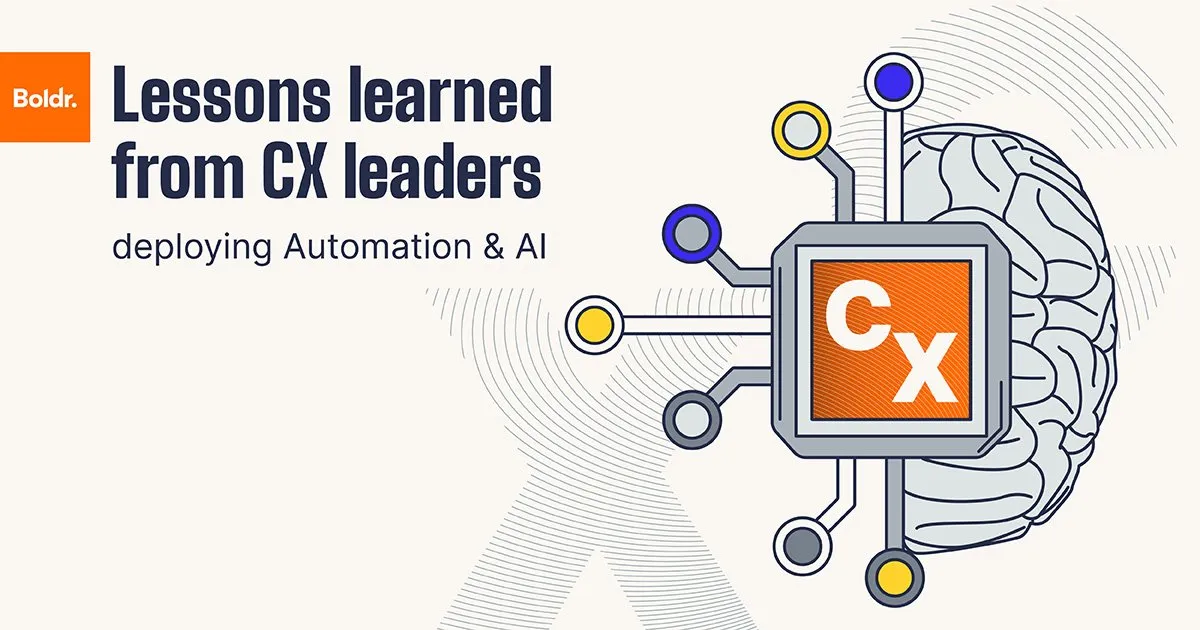If your customer support metrics look worse after implementing AI, congratulations! Your strategy might actually be working exactly as intended.
One of the first things typical CX leaders will notice after implementing AI is that their average handle time is skyrocketing. Next, they spot first response times lengthening, and sometimes even customer satisfaction scores (CSAT) dipping slightly.
If this is you, no worries. Your initial instinct (and that of your leadership team) might understandably be concern—after all, traditionally these metrics signal trouble. But here's what's really going on: these shifts are precisely what should happen when your AI is effectively doing its job.
AI is designed to swiftly handle straightforward and routine customer inquiries, keeping simpler issues from ever reaching your human support agents. As a result, the interactions your human team does manage become inherently more complicated. These conversations involve technical intricacies, emotional nuances, or scenarios that require deep empathy and problem-solving. Naturally, they should—and will—take more time. This isn't a sign your team is slowing down; rather, it's proof your AI is successfully filtering out simpler queries, leaving space for your humans to focus on interactions that genuinely benefit from human connection.
Think about it this way: If your support agents are still being incentivized solely by AHT, they’re pressured into rushing through interactions that genuinely require patience, empathy, and thoughtful problem-solving. That's problematic. It degrades customer relationships and risks your brand's reputation. A more meaningful measure in this context is how effectively your team resolves customer issues at the first human interaction. Focusing on first-response resolution rates empowers your agents to invest the necessary care and attention into every complex interaction, fostering genuine customer satisfaction. Consider an interaction with an airline, for instance: a customer is speaking with a bot to try to cancel their flight or change it to a later date. The bot escalates them to a human because it isn’t able to handle cancellations. When your team member connects with the customer, they uncover that there has been a death in the family. The customer is distraught! Do you want your team member rushing through that conversation just so they hit whatever marks you’ve set for AHT? Hopefully, the answer is no.
With that in mind, here’s how you can thoughtfully recalibrate your metrics to better align with this new AI-driven reality:
Prioritize quality and depth over quickness
Speed used to be king, but the game has changed. Instead of measuring support success by how rapidly your team can respond, focus on the completeness and thoroughness of their initial interactions. Track the first human response resolution rate to encourage your team to deliver thoughtful, fully-resolved answers that leave customers satisfied without needing further follow-ups.
Luckily, there are easy ways to measure this across common helpdesk platforms. In Intercom, use custom conversation tags or attributes combined with custom reporting to track resolutions after a single human reply. Zendesk allows automations to tag single-reply resolutions, and Zendesk Explore can generate clear, actionable reports. In Help Scout, leverage workflows to tag single-touch resolutions and use built-in reporting features to clearly view this important metric.
Embrace and communicate the benefits of increased response times
Complex customer inquiries deserve patience and thoroughness. If your initial response times increase, celebrate it as evidence your agents are tackling genuinely challenging issues head-on. Shift your measurement toward response quality, recognizing that a thoughtful reply builds stronger customer relationships than a speedy but shallow answer ever could.
To practically implement this shift, clearly communicate to your team and leadership why response times may naturally increase, highlighting specific examples of complex tickets your team has successfully resolved. Regularly showcase cases where thoughtful, patient responses led directly to positive customer outcomes. Use internal newsletters, team meetings, or leadership briefings to reinforce this positive narrative.
Reframe escalation metrics to empower your frontline team
While the total volume of escalations from AI to human agents should decrease as AI improves, you might see an uptick in the percentage of issues your human support team escalates to specialized departments like engineering. This isn't a failure; it’s an opportunity. It signals that your team is now addressing more sophisticated customer issues. Use this insight to provide targeted training and support, equipping frontline agents with the skills and autonomy they need to confidently handle advanced situations independently.
To operationalize this, regularly review escalation data to identify common themes or gaps in agent knowledge. Implement targeted training programs to upskill your agents, and create clear escalation paths and criteria to empower agents with greater decision-making autonomy. Platforms like Zendesk or Intercom allow easy tracking and analysis of escalations, providing clear visibility into training needs and opportunities for improvement. Not only does this empower your team, but it helps to delineate clear lines for career development in a time when everyone is afraid that AI is going to take their jobs.
Strategically navigate temporary CSAT fluctuations
Initially, customers may express frustration through lower CSAT scores, as complex issues often take more time to resolve.
- Recognize this as a temporary and natural adjustment period.
- Proactively address this by reviewing your support policies and eliminating any unnecessary hurdles.
- Empower your agents with greater decision-making autonomy—like offering refunds or other solutions without needing extensive approvals—to resolve complex problems swiftly and effectively.
- This approach quickly rebuilds customer trust and satisfaction.
Practically, this means revisiting your policies and guidelines and clearly communicating any changes to your team. Regularly analyze customer feedback through helpdesk platforms to identify friction points or repeated frustrations. Actively involve your team in policy discussions, encouraging their input on what autonomy would help them better serve customers. Track changes in CSAT scores closely after implementing these adjustments to demonstrate effectiveness.
Ultimately, metrics like AHT were perfect for traditional support environments, but they don’t translate seamlessly into an AI-supported landscape. Just as you wouldn't assess the performance of an electric car using miles-per-gallon, you shouldn't gauge AI-enhanced support purely by legacy KPIs. Instead, redefine what exceptional customer experience looks like: from the moment customers land on your site through to renewal. Pinpoint the crucial moments that matter most to your customers, then build your new metrics around enhancing those interactions.
Connect with the Boldr team today to explore practical, impactful strategies that unlock your customer support team's full potential.


